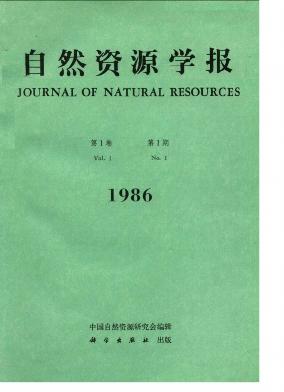Special Column:Celebration of the 70th Anniversary of IGSNRR, CAS
Chen Chuankang
Strategy of regional development has different model guiding developments: (1) model guiding development of resources, (2) that of industry, (3) that of technology, and (4) that of commerce A model guiding systematic development can be created by integrating these models. In addition to model guiding development of personal ability, holographic model guiding development can be created. This model aims at raising the value of person and promotes person's transformation from traditional person to modern person with the rhythm of industrial society and initiating the spirit of information societyThus it can be seen that based on raising the value of person, using regional resources, regulating industrial structure, raising technological structure, transforming commercial structure from interversion type to extroversion type, holographic strategy of development creates reasonable structure reflecting the changing relationships.Geography is used to study the interrelations among elements of region (the corresponding and changing interrelations among elements forming geography).Based upon the researches mentioned above, development's strategy of regions takes a forward step to inquire into the corresponding anil changing relations among different structures on the earth s surface Using the theoretial foundations of regional development's strategy, we study internal structures of some regions as well as the structures of background surrounding the same regionsThe corresponding and changing analysis of different structures mentioned above can be illustrated by the relations of framework's network as follows: Background's structures of the surrounding region for the harbour city is emphasized on the basis the structures of different levels of economic hinterland Tor example, four levels of spatial resources of rear-area can be divided for Lianyuu Port: ( 1 ) Gulf opposite to the Lianyungang-Haizhong. The northern part of Jiangsu Province and the southern part of Shandong Province are its near hinterland. Viewed from coastal zone of our country, this region is a relatively backward area, compared with the southern part of Jiangsu Province. (2) Middle and western section of Longhai railroad is the key area for industrial construction of our country, especially for engineering industry. Lianyun Port is a sen port for this section and Central plain, central part of Shanxi Province and eastern part of Gansu Province. (3) Lianyun Port is the most favourable seaport for hinterland Central plain and most part of Northwest area including Qinghai Province, Hcxi Corridor, western part of Inner Mongolia Autonomous Region, Hui Autonomous Region of Ningxia, Uygur, Autonomous Region of xinjiang, even some parts of Tibet. (4) If the railfoad in northern part of Xinjiang is comple:ed anJ connected with the railroad in U. S. S. R. through Ala pass, Lianyun Port will be the most favourable sea harbour also for western Europe and U. S. S. R., entering economic circle of Pacific Ocean from western and central Eurasia.According to this procedure, the research of development's strategy of a region can counect general strategy with sub-strategy, fulfil every strategical policy down to the structure on the surface of the earth, and make "soft consultation" to be realized easily.It is noted that regional superiorities have different levels and some can be brought into play through the local investment. Some belong to provincial or national superioritcs and can be brought into play through investment from higher level, and need to be listed into provincial or national plan.Based upon the theory for development's strategy of a region, we hold that the demonstrative contents of developmental strategy of a region can be summed up: ( 1) Giving full play to local superiority and facilitating economy to start on the way of development; (2) strengthening the lateral connection and extending attractive and radioactive scope, enlivening economy through transportation, circulation and tourism; (3) demonstrating and propagandizing the superiorities on provincial and
